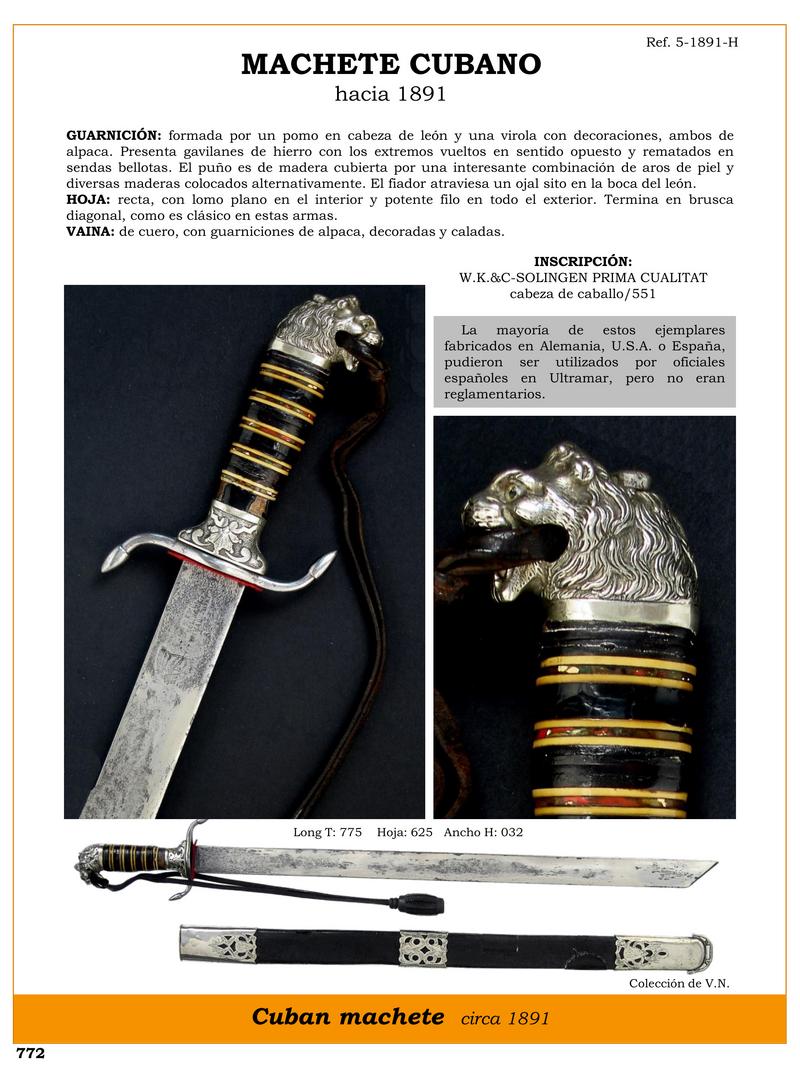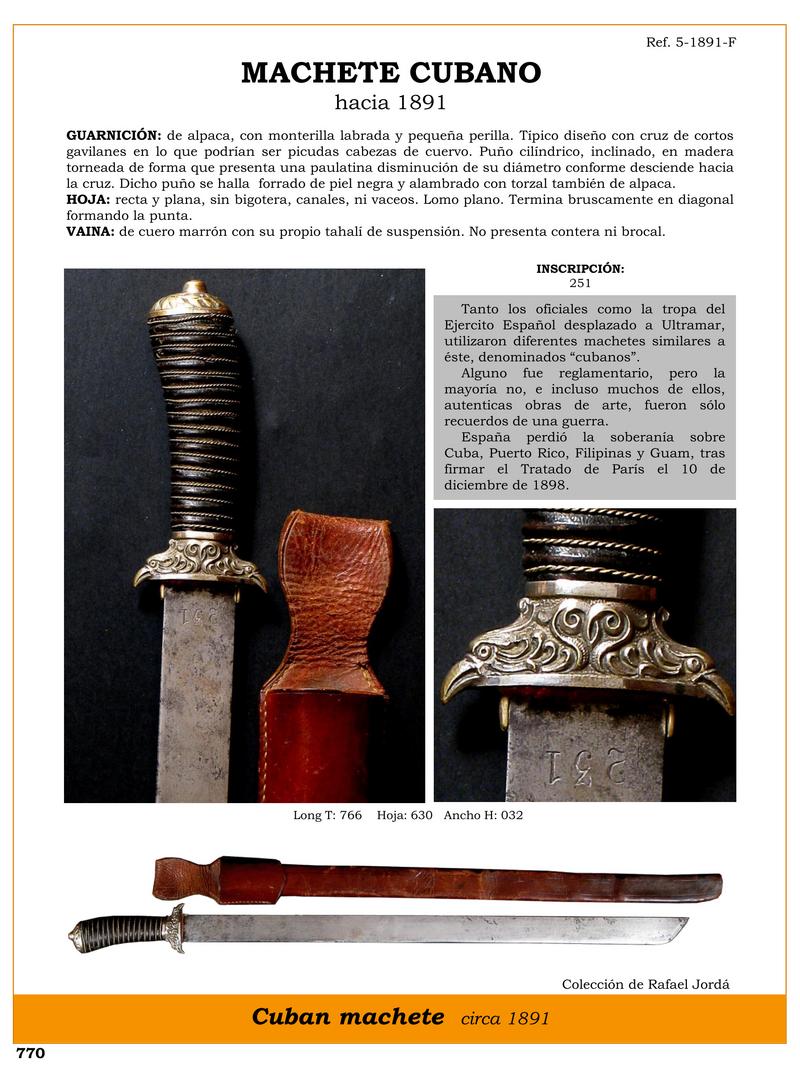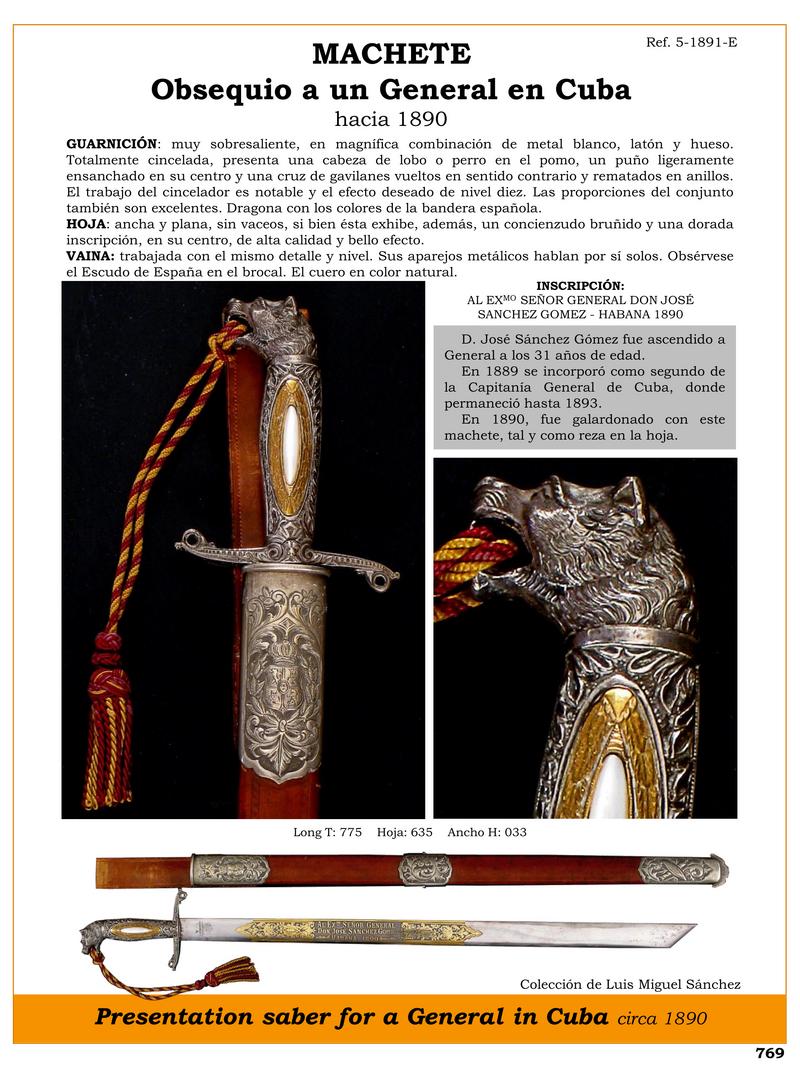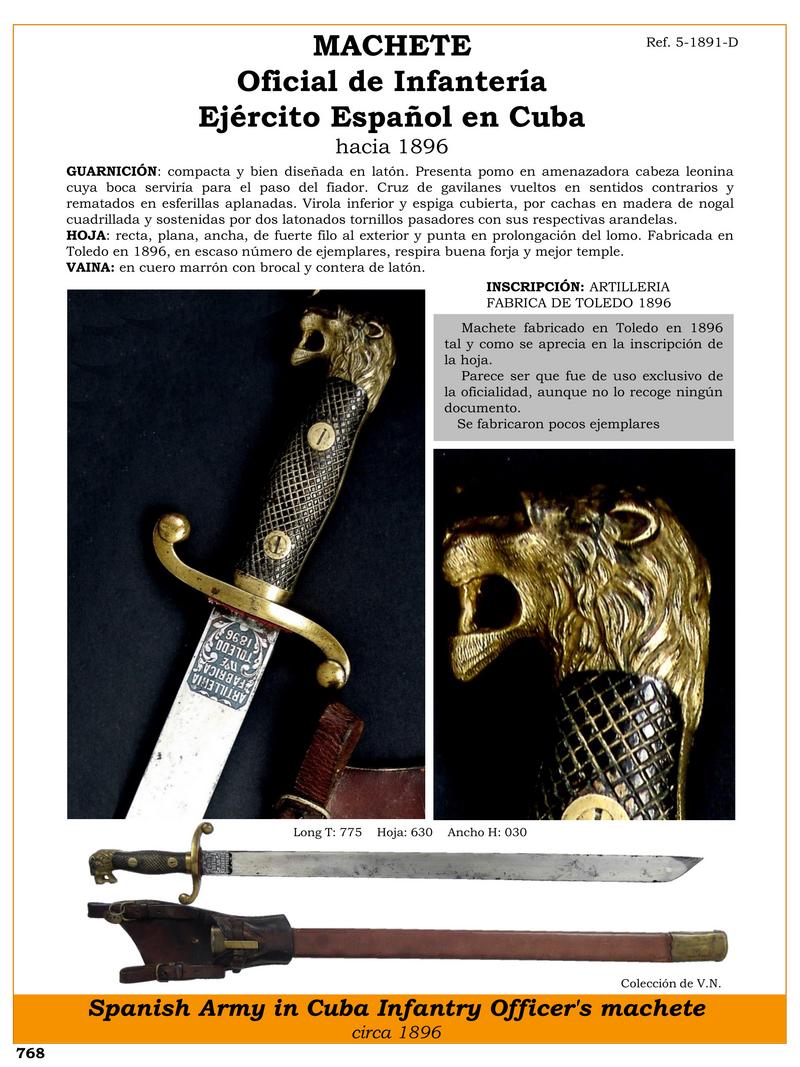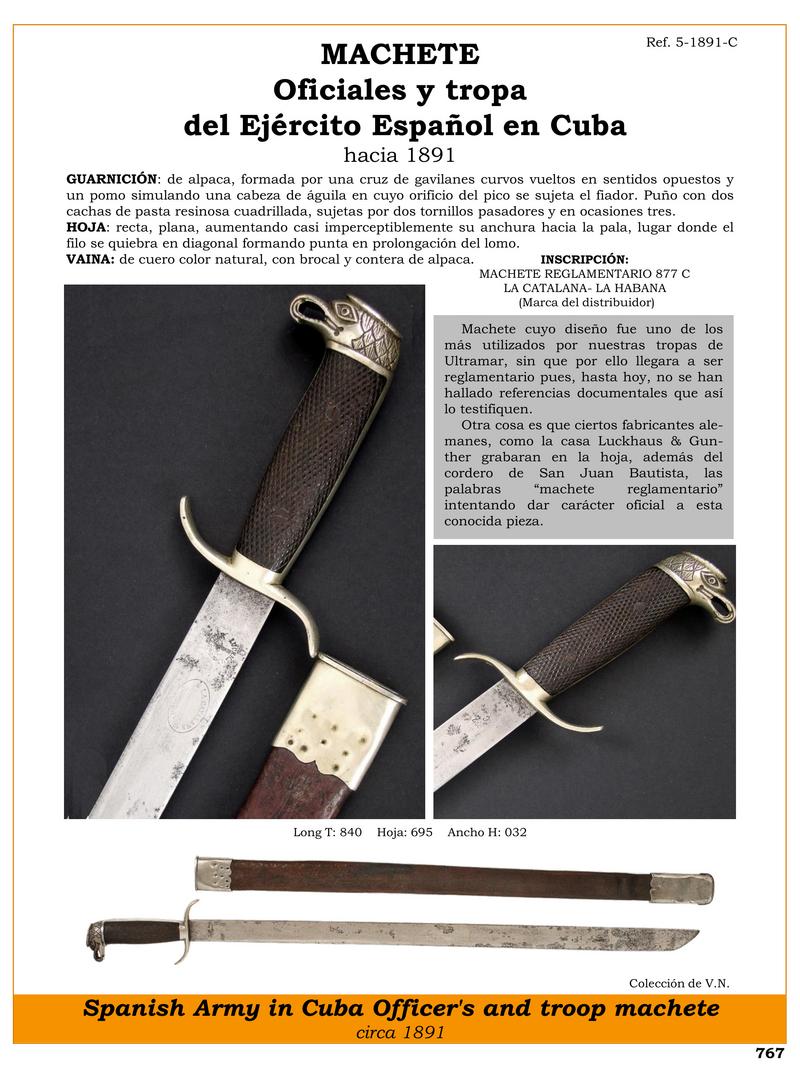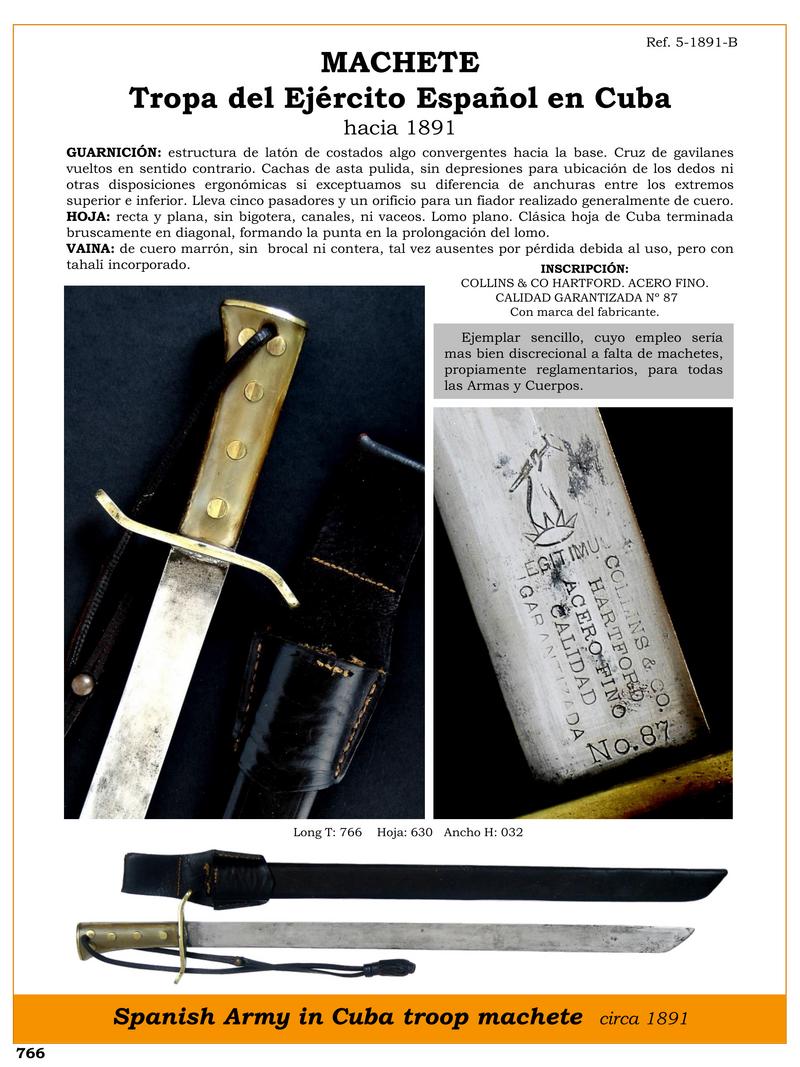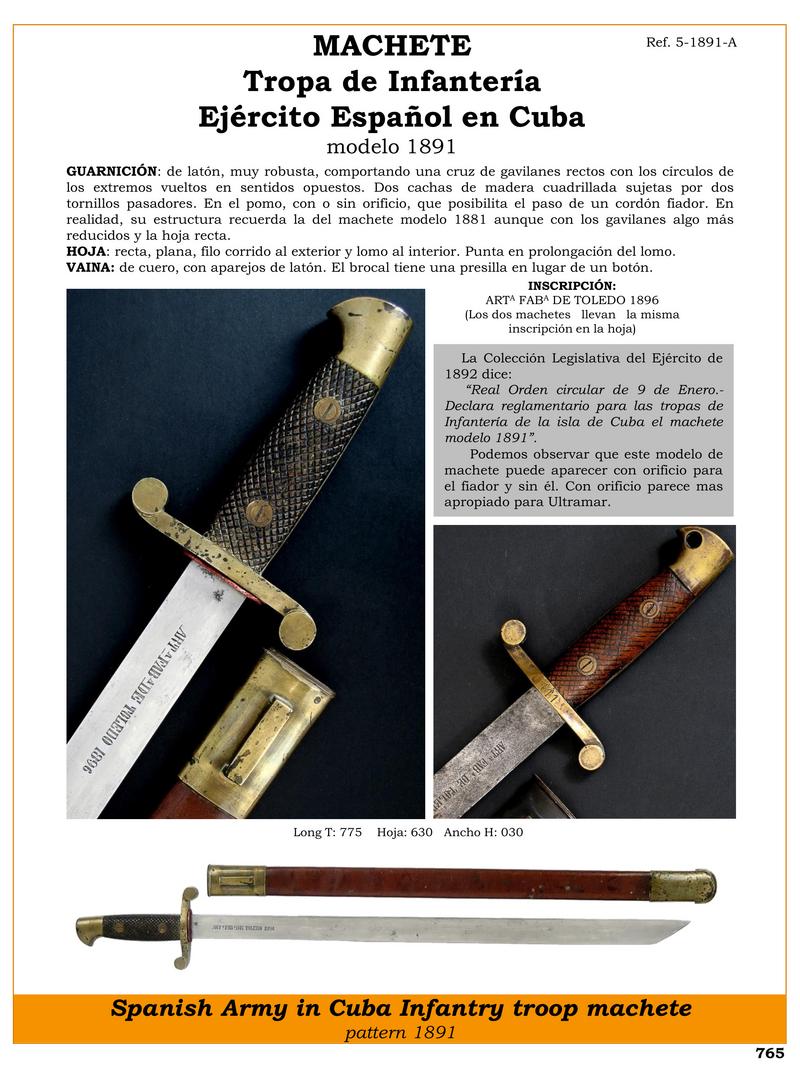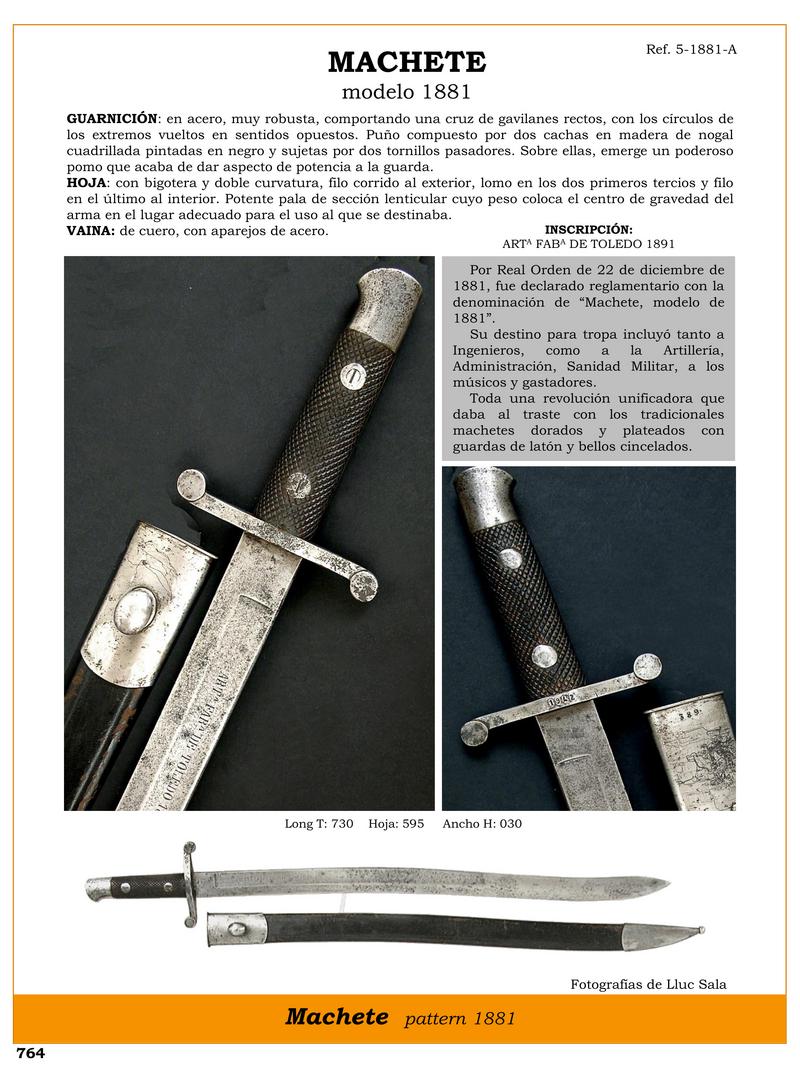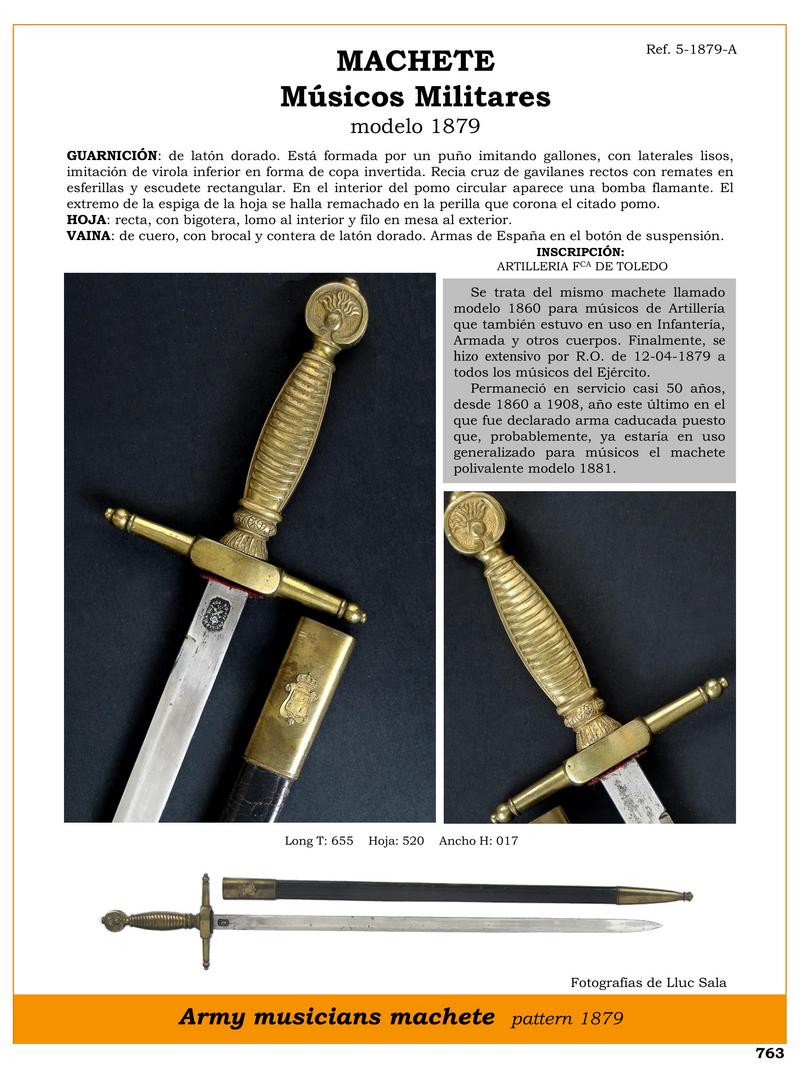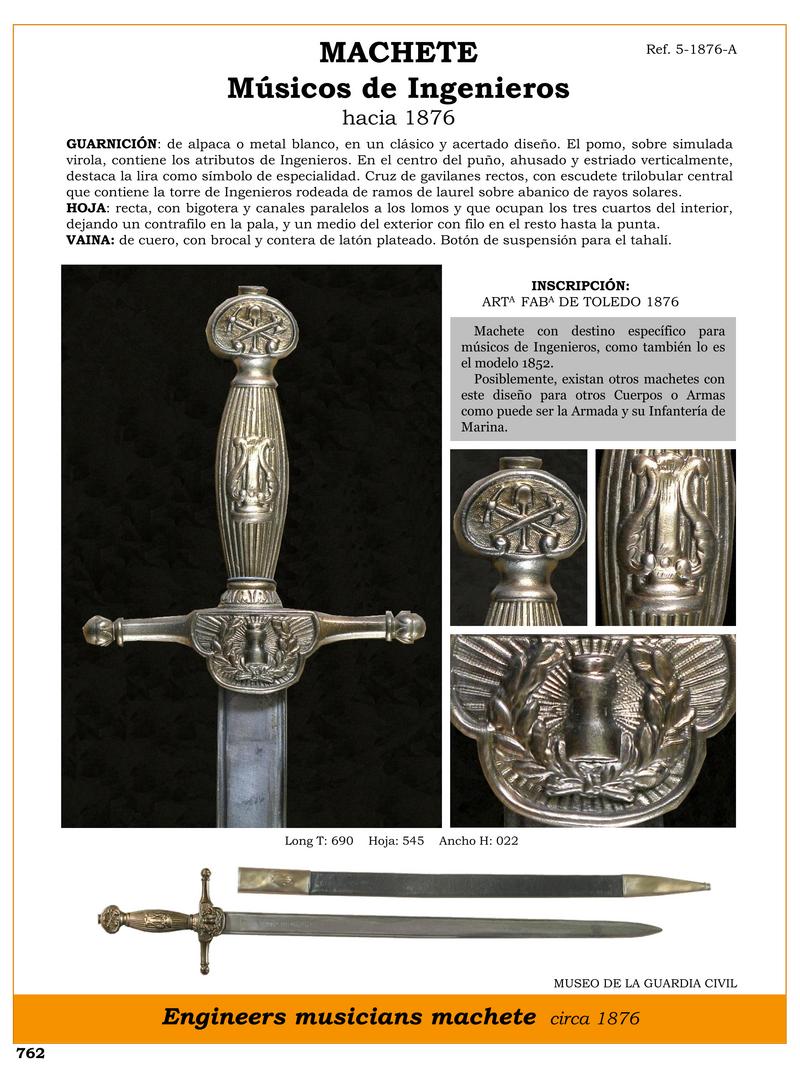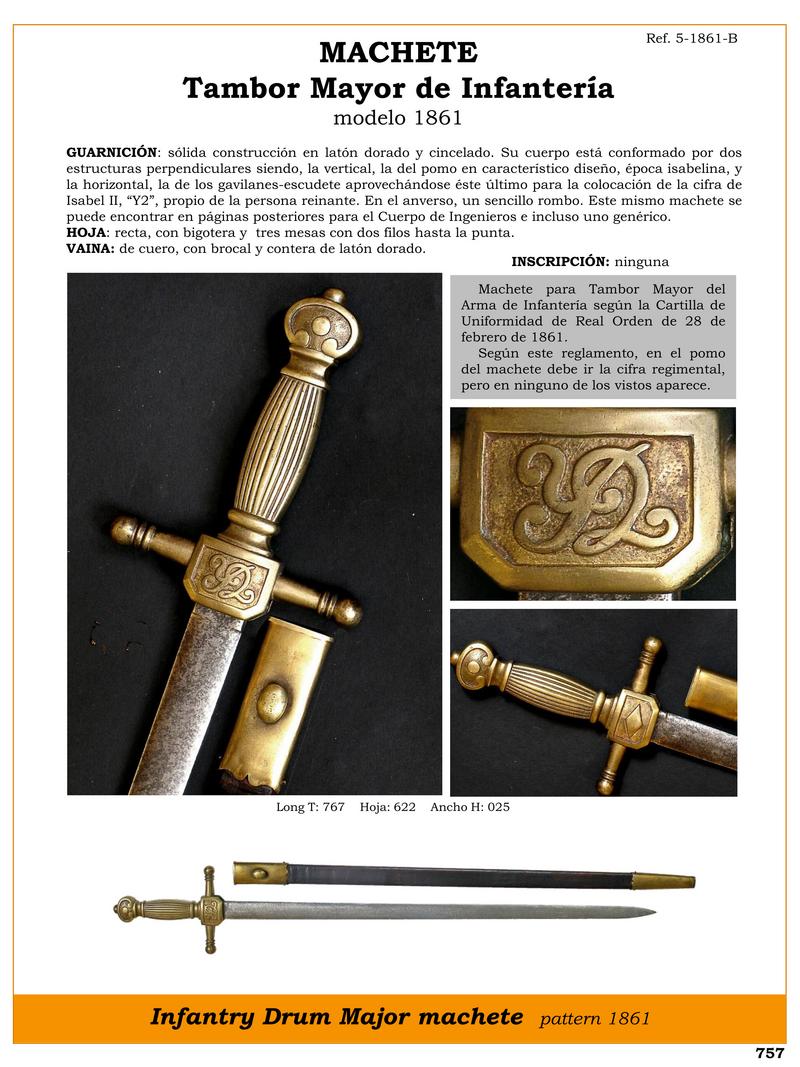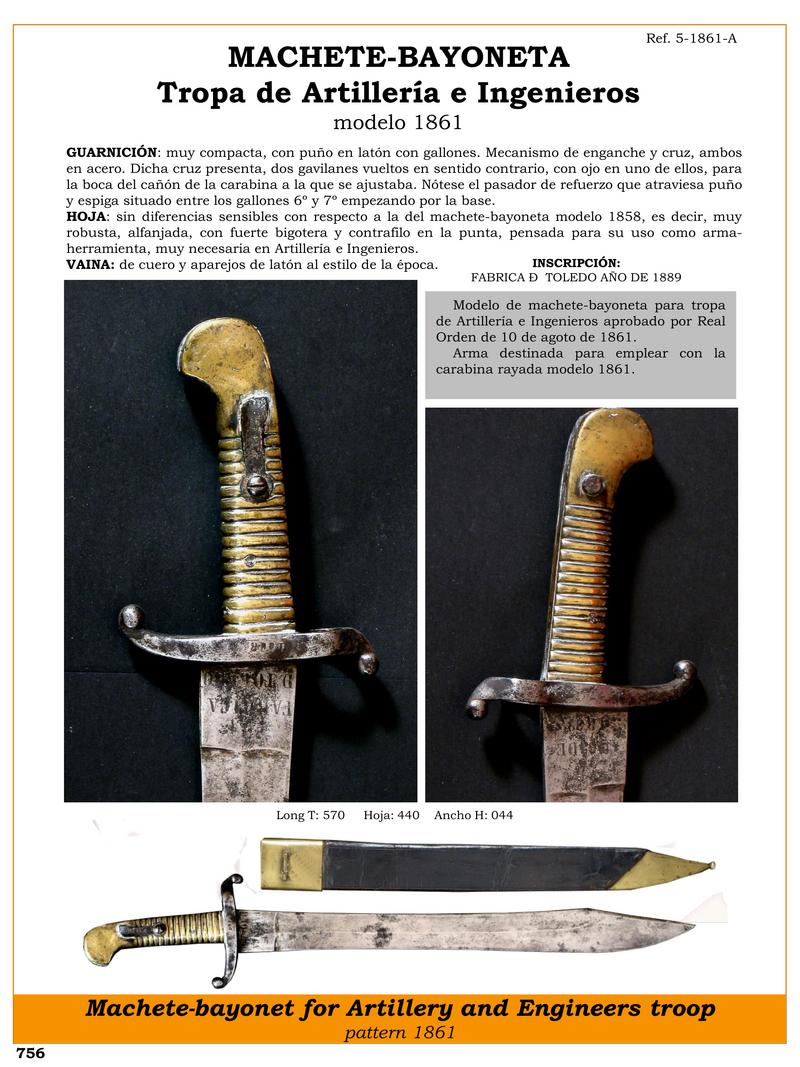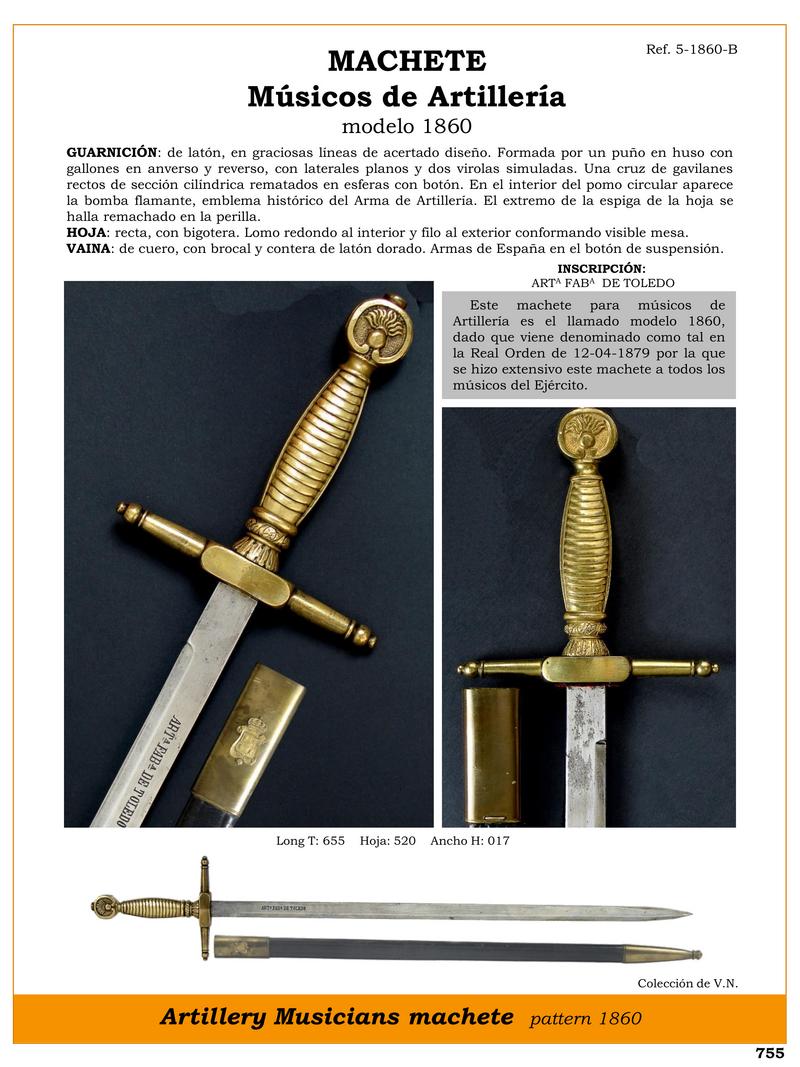Historical Infantry Machete: Military Exclusivity 1896
ENCYCLOPEDIA OF SPANISH SWORDS MACHETE. Author: Vicente Toledo Momparler (sword expert) Reference 5-1891-D Name Infantry Officer’s Machete Era Cuba, 1896 Hilt Compact and well-designed in brass, pommel with lion’s head, crossguard with quillons, bottom ferrule with walnut grips Blade Straight, flat, …
Machete-Bayonet 1861: The Ideal Weapon for Artillery
ENCYCLOPEDIA OF SPANISH SWORDS MACHETE-BAYONET Artillery and Engineers Troops model 1861. Author: Vicente Toledo Momparler (sword expert) Reference 5-1861-A Name Machete-Bayonet Troops Artillery and Engineers Model 1861 Mounting Very compact, with brass grip and bands. Hook and cross mechanism, both …
Artillery Musicians’ Machete: Classic 1860 Design
ENCYCLOPEDIA OF SPANISH SWORDS MACHETE. Author: Vicente Toledo Momparler (sword expert) Reference 5-1860-B Name Machete Artillery Musicians Model 1860 Guard Brass, with graceful lines of well-executed design. Spindle-shaped grip with braid, flat sides, straight quillons, historic emblem of the Artillery …
